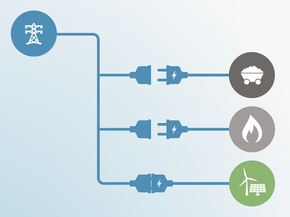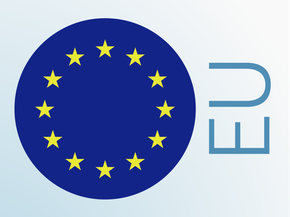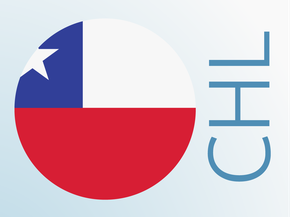Current Policy Projections
Economy-wide
Between 1990 and 2000, emissions in Ukraine dropped by 57% from 916 MtCO2e to 395 MtCO2e excl. LULUCF. From 2001 to 2007, emissions started to increase again moderately to a level of 439 MtCO2e excl. LULUCF or 52% below 1990, followed by a steep decline during the financial crisis in 2009.
Currently implemented policies are expected to lead to an emissions level of 375–400 MtCO2e excl. LULUCF in 2020 and 442–628 MtCO2e excl. LULUCF in 2030.
Energy supply
In 2008, Ukraine introduced a feed-in-scheme with fixed prices, called the "green" tariff for electricity. The green tariff also guarantees grid connectivity to all renewable power generated from the project. The feed-in tariffs (FiT) were initially established at relatively high rates: 0.42 €/kWh for rooftop solar PV under 100 kW and 0.11 €/kWh for wind projects with capacity greater than 2 MW (International Energy Agency, 2017a). The tariffs were updated in 2012 and 2015 and adjusted to market levels. The International Energy Agenda (2017a) reports FiT rates of 0.18€/kWh for roof-top solar and 0.10€/kWh for large wind projects (greater than 30 kW capacity).
The amendment in 2015 removed the “local content requirement” previously introduced in 2013. This was replaced by a “local content premium,” which provides an additional premium to plants using components produced domestically. A 5% premium on top of the regular feed-in tariff is provided for 30% local content, while a 10% premium is provided for 50% local content (International Energy Agency, 2017a). In the case of a wind turbine, the blade and tower are each considered to be 30% of the plant, while the main frame and nacelle are each considered to be 20% of the plant (International Energy Agency, 2017a). In the case of a wind turbine, the blade and tower are each considered to be 30% of the plant, while the main frame and nacelle are each considered to be 20% of the plant.
In 2017, Ukraine updated its energy strategy through to 2035 (Government of Ukraine, 2017). The strategy sets new targets for electricity generation from different energy carriers. In 2035, 25% of electricity generation is foreseen to come from renewable energy sources other than hydropower (2014: 1%),[1] 13% from hydropower (2014: 5%), 50% from nuclear power (2014: 48%) and the remaining 12% from thermal power plants (2014: 39%). However, a step-by-step implementation plan has not been developed yet. As there are no clear supporting policies tabled or discussed, except the feed-in tariff mechanisms, we have not further quantified the energy strategy in our analysis.
[1] 2014 energy mix based on IEA statistics (International Energy Agency, 2017b).
Industry
In January 2018 Ukraine’s environment ministry published a draft law that will require big emitters to audit their emissions as an initial step towards Ukraine developing a functioning ETS by 2020 (Carbon Pulse, 2018). The draft law contains no information on the emissions threshold for installations, but sets out plans for a government registry, third party verification, and a process for companies to devise emissions monitoring plans. As this policy is still under development, we have not taken it into account in our analysis.
Further analysis
Latest publications
Stay informed
Subscribe to our newsletter






